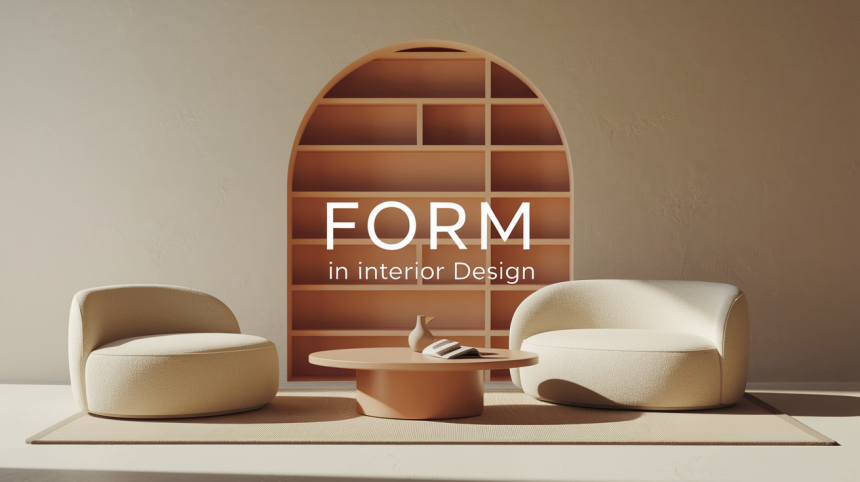What if the key to a better-looking home isn’t about costly furniture but how shapes work together in your space?
Form is how shapes, lines, and objects come together in your space. Getting it right can make your home feel just right, like that perfect cup of coffee on a cold morning.
In this guide, we’ll break down the basics of form in simple terms. You’ll learn how to spot good form, fix common mistakes, and use these ideas in your own home without needing fancy design training.
From small rooms to big houses, these simple form tips can turn any space into a place where you actually want to spend time.
What is Form in Interior Design?
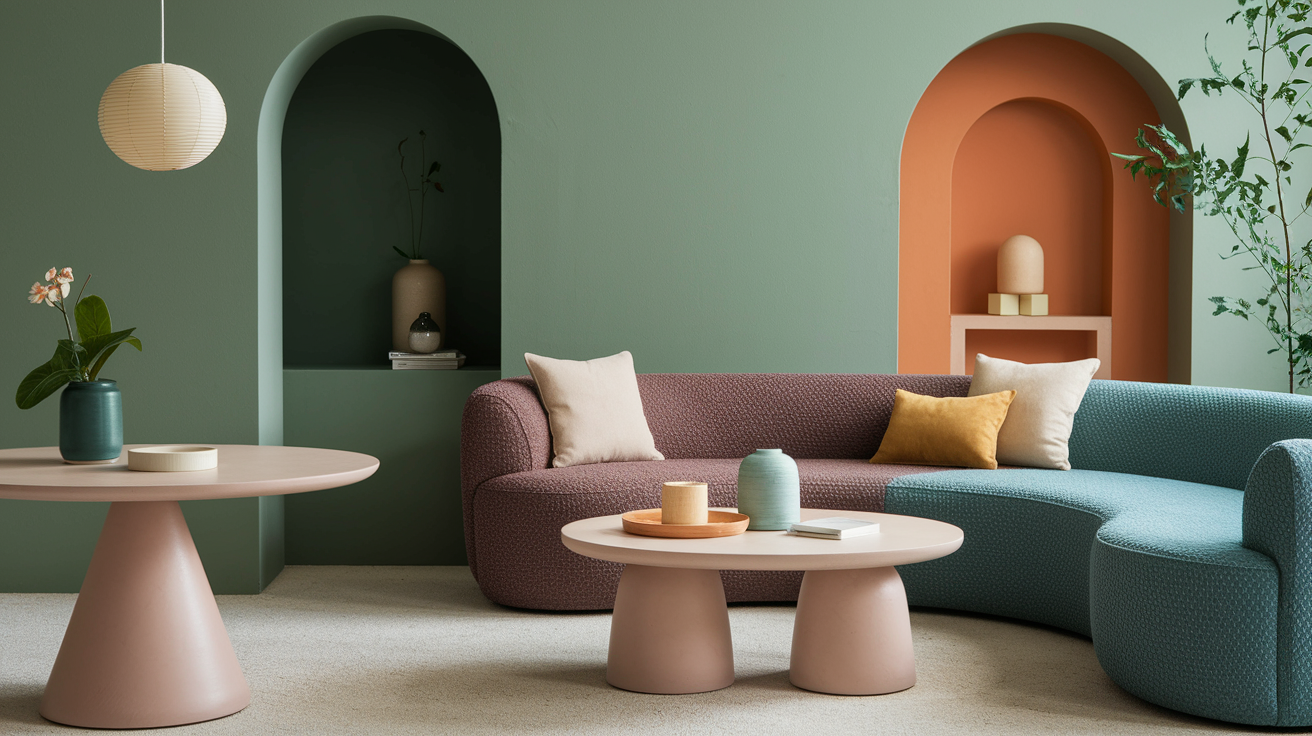
Let’s talk shapes! Your home is full of them—some you notice, some you don’t.
Form in interior design is just a fancy way of saying “the shapes of stuff in your room.” It’s why a round table feels different from a square one, and some couches make you want to sink in while others make you sit up straight.
Picture walking into a room filled with only sharp, boxy furniture. Now, imagine that same room with soft, curved pieces instead. Big difference in how it feels, right? That’s the power of form!
Form isn’t just about looking pretty—it’s practical too. The shapes in your room affect how you move through space, where your eyes travel, and even how relaxed you feel.
The cool part? Once you know the basics about form, you can fix those rooms that never felt quite right, but you couldn’t figure out why.
Also read: Guide to Mix and Match Patterns in Interior Design
Basic Elements of Forms in Interior Design
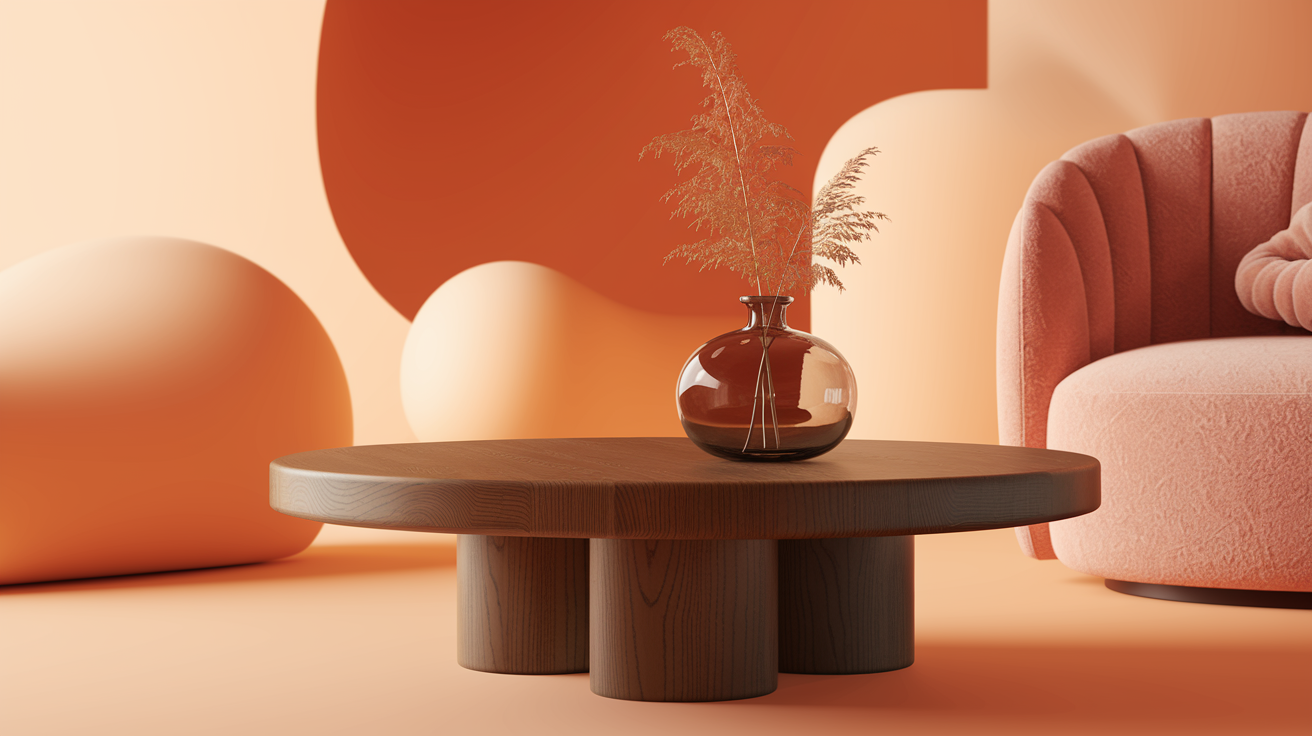
The building blocks that make up every shape in your space, from the simplest vase to the most complex furniture piece.
| Element | Description | Visual Impact | Examples |
|---|---|---|---|
| Lines | The edges where forms begin and end | Define boundaries and create movement | Table edges, chair silhouettes, light fixtures |
| Mass | The visual weight and solidity of a form | Creates grounding and presence | Heavy sectionals, solid wood furniture |
| Volume | The space a form takes up or contains | Affects how spacious a room feels | Open vs. closed storage, hollow vs. solid forms |
| Contour | The outline or silhouette of a form | Creates the first impression | Chair profiles, lamp shapes, and mirror frames |
| Texture | The surface quality of a form | Adds depth and tactile interest | Smooth glass vs. rough stone, tufted upholstery |
| Direction | Which way a form seems to move or point | Guides the eye through space | Vertical bookcases, horizontal counters |
Understanding these elements helps you analyze why certain forms work better in different spaces.
For example, a form with smooth contours, light mass, and an upward direction creates a very different feeling than one with angular contours, heavy mass, and a horizontal direction.
The most successful interior spaces thoughtfully consider each of these elements when selecting and arranging forms throughout a room.
Principles of Form in Design
These invisible rules determine whether a room’s shapes will fight each other or dance together in perfect harmony.
Key Principles That Shape the Form in Design:
| Principle | What It Means | Quick Example |
|---|---|---|
| Proportion | Size relationship between parts | Sofa where the seat depth and height work well together |
| Balance | How forms create visual weight | Large sofa balanced by two chairs opposite it |
| Rhythm | Repeating forms for flow | Similar vases are placed along a mantel |
| Scale | How forms fit the space and people | Furniture sized right for the room’s dimensions |
| Unity | Forms that work well together | Curved elements that repeat throughout a room |
| Contrast | Different forms used together | Round mirror above rectangular console table |
The trick to good form? When these principles work together, people notice the beauty, not the rules behind it!
Types of Forms in Interior Design
From sharp corners to flowing curves, your choice of forms speaks volumes before anyone even sits down in your space. These shape foundations create the backbone of any well-designed room.
Geometric Forms
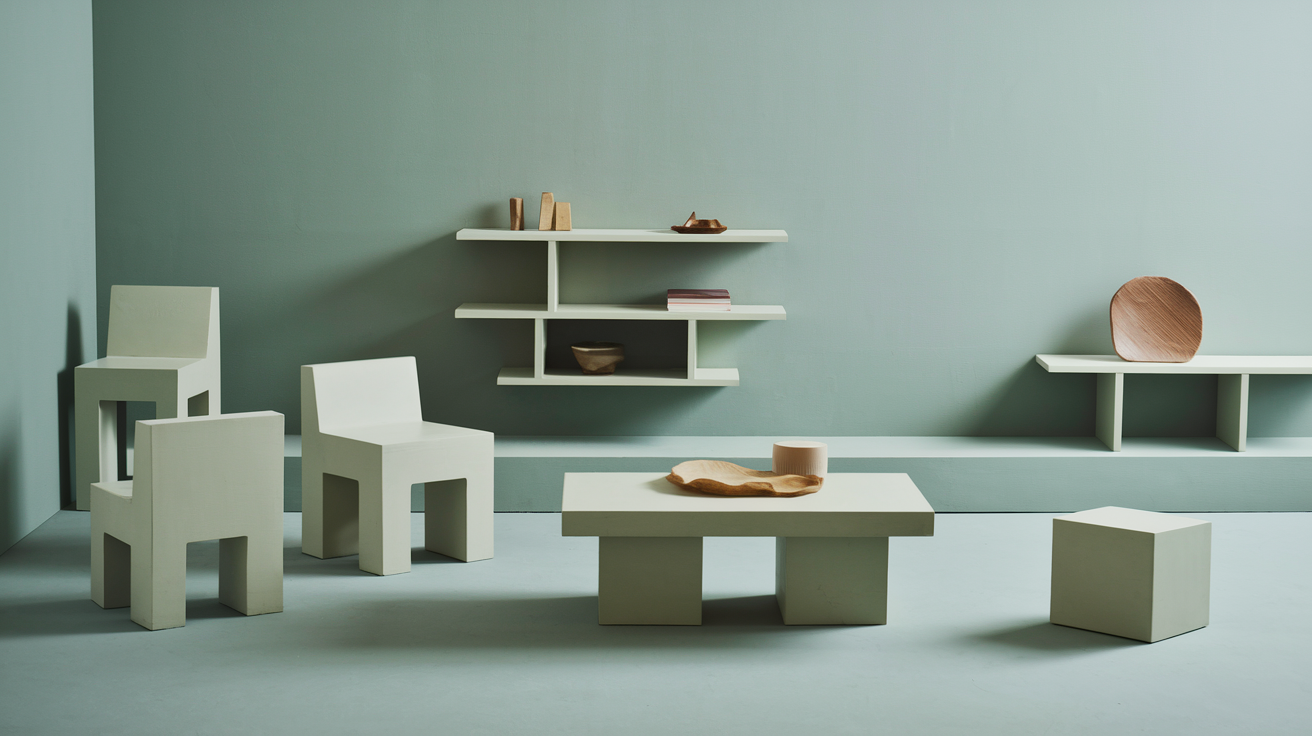
Clean-cut shapes with mathematical precision! Squares, rectangles, circles, and triangles bring order to spaces. Geometric forms work well in modern, contemporary, and minimalist styles. They create a sense of structure and stability in a room.
Quick tip: If you want a calm, organized feeling, stick with similar geometric forms throughout your space—like rectangular furniture pieces with square or rectangular accessories.
Organic Forms
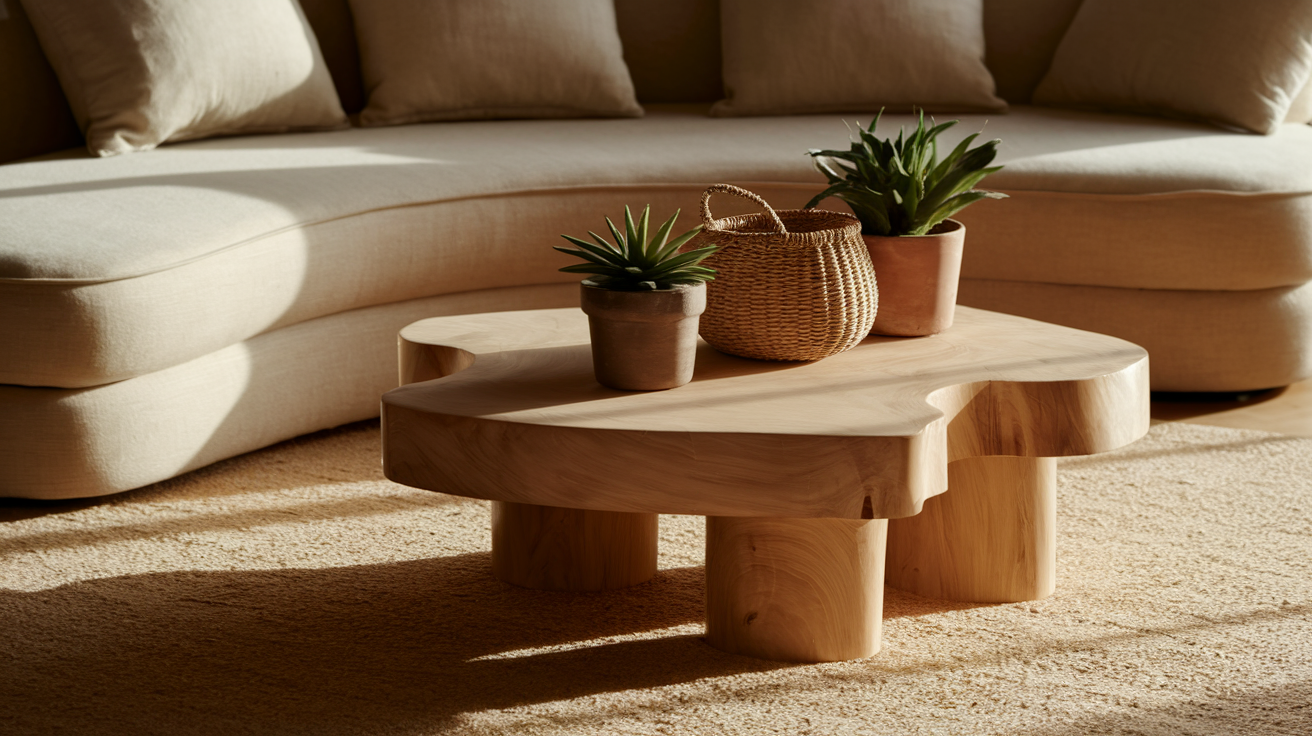
Nature-inspired shapes that flow freely! Think curved sofas, irregular coffee tables, or lamps shaped like trees. These forms feel more natural and relaxed. They add warmth and a casual vibe to any space.
Try this: Mix one standout organic form (like a wavy accent chair) into a room with mostly geometric pieces to create an interesting focal point.
Open Forms
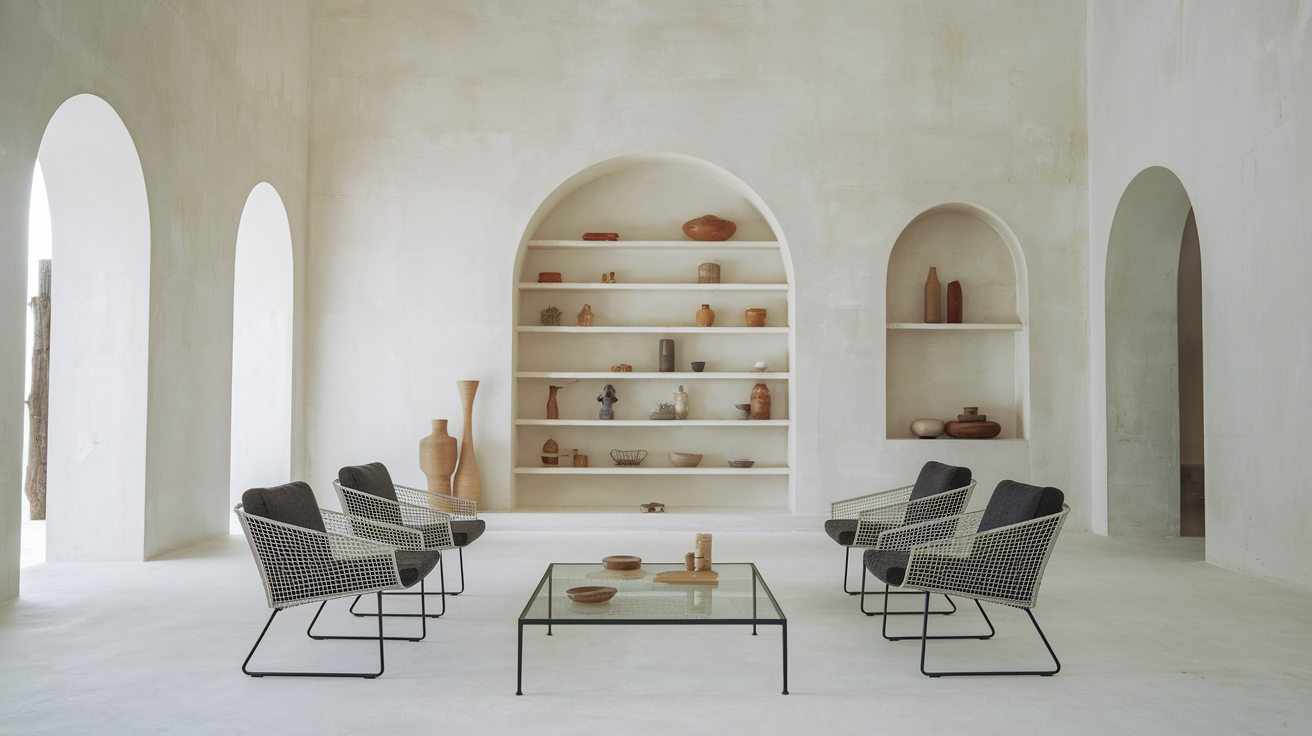
Shapes that allow you to see through them! Wire chairs, glass tables, and open bookshelves are all open forms. They take up physical space without blocking your view, making rooms feel larger and airier.
Space-saving hack: In small rooms, choose more open forms to prevent the space from feeling cramped and closed in.
Closed Forms
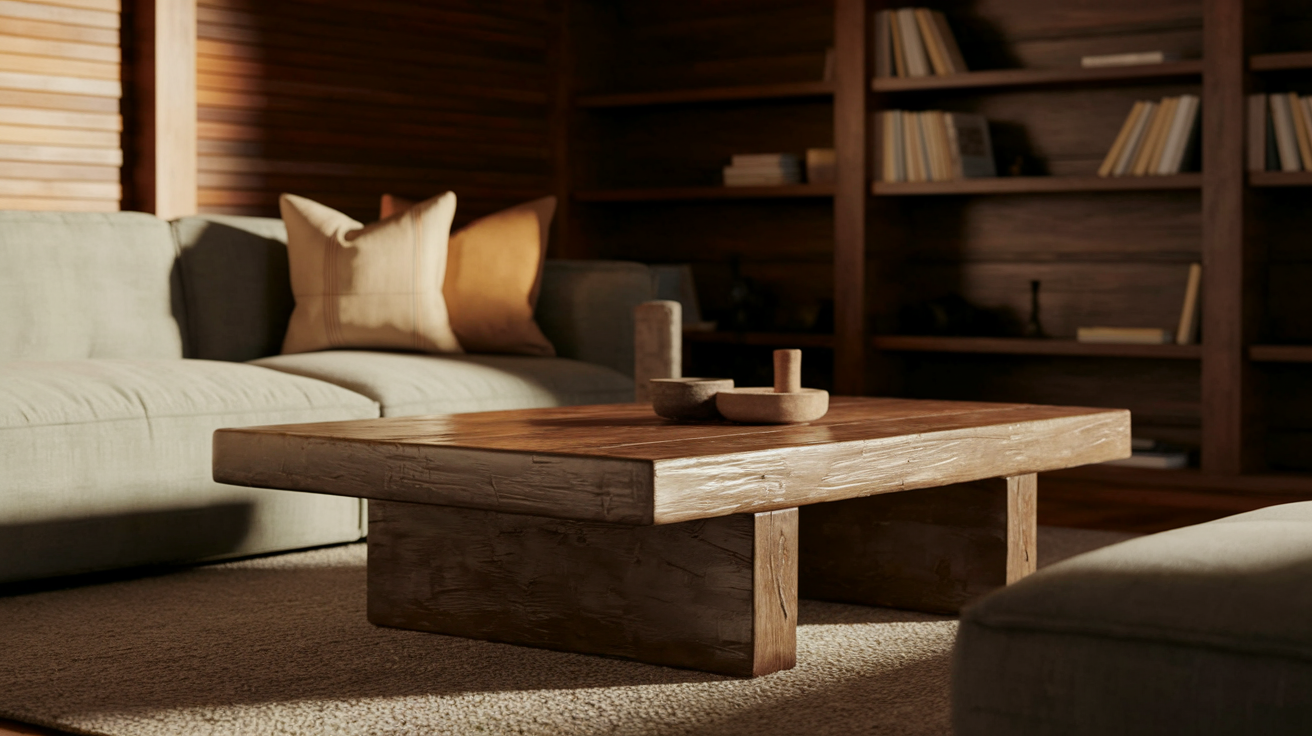
Solid shapes that create visual weight! Upholstered sofas, wooden dressers, and solid coffee tables are closed forms. They feel substantial and grounding in a space.
Balance trick: Heavy, closed forms at the bottom of a room (like solid furniture) with lighter, open forms at the top (like minimal shelving) create a room that feels both stable and spacious.
Proportional Forms

The size relationship between objects! When forms are well-proportioned, they fit the space and each other perfectly. A tiny coffee table in front of a massive sectional looks odd because the forms aren’t proportional.
Measuring guide: For good proportion, a coffee table should be about 2/3 the length of your sofa. This same principle applies to many forms of relationships throughout your home!
How to Mix Them Successfully
The most interesting rooms don’t stick to just one form type. Here’s how to blend geometric and organic forms:
- Start with one dominant form type (about 70% of your main pieces)
- Add accent pieces in the opposite form (about 30%)
- Use color and material to help bridge different forms
- Look for “transitional” pieces that have elements of both (like a rectangular table with rounded corners)
There’s no strict rule about which forms work best—it depends on your style:
Love modern, minimalist looks? Lean toward geometric forms with just a few organic touches.
Prefer cozy, casual spaces? Start with more organic forms and add geometric pieces for structure.
Want a balanced, transitional style? Aim for a more even mix of form types.
The best spaces use forms thoughtfully, but don’t feel rigid about the rules!
Tips for Working with Form in Interior Design
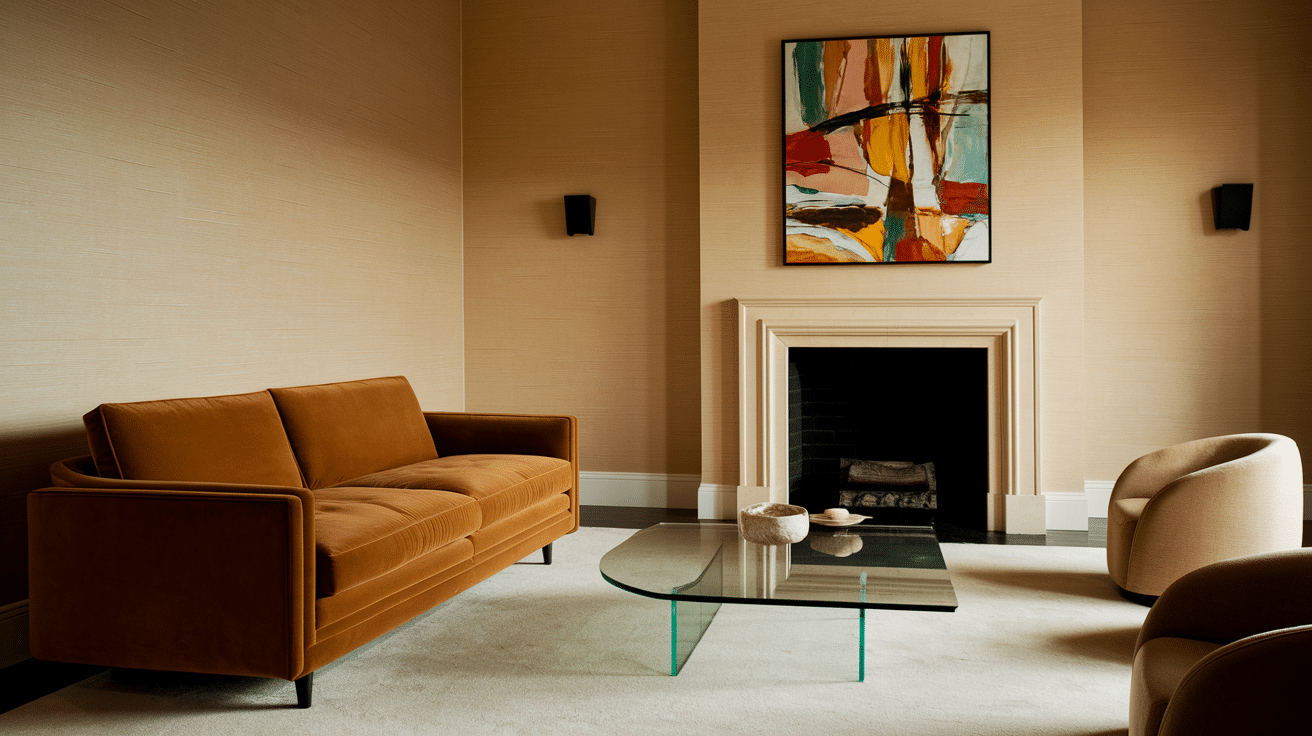
These shape tricks will make your rooms look put-together without a design degree.
Getting the form right doesn’t require special training. It’s about understanding what looks and feels good in your space, then making smart choices. With these tips, you’ll develop an eye for forms that work well together.
• Form follows function — Round tables help people talk; square ones save space.
• Room purpose matters — Relaxing spaces need curves; work areas like straight lines.
• Big pieces first — Start with your sofa or bed shape, then match smaller items.
• Mix heavy and light — Balance chunky furniture with airier pieces.
• Space counts — Leave room between forms so they can “breathe.”
• Repeat shapes — Use similar forms for a pulled-together look.
• Create focus — Make one item stand out with a different shape.
• Size properly — Match the form size to your room size.
• Keep paths clear — Choose forms that don’t block movement or views.
• Consider ceiling height — Low ceilings need lower furniture.
• Test with cutouts — Try paper shapes before buying real furniture.
• Trust your gut — If a shape feels wrong, it probably is!
Conclusion
Form in interior design isn’t just for the pros—it’s for anyone who wants a home that feels right. By understanding how shapes work together, you can create spaces that look good and function well in daily life.
Remember that there’s no perfect formula for form. Your home should reflect who you are, not rigid design rules. Mix geometric and organic shapes. Play with scale. Trust your instincts when something feels off.
Start small by focusing on one room. Which forms already exist? Which ones clash? Which ones make you happy? Make one change based on what you’ve learned, then notice how different the space feels.
Looking for more interior design inspiration? Check out our other guides on interior design to create a home you’ll love.
Ready to upgrade your space? Take a photo of your favorite room and identify the forms that make it work. Then apply those same principles elsewhere!

